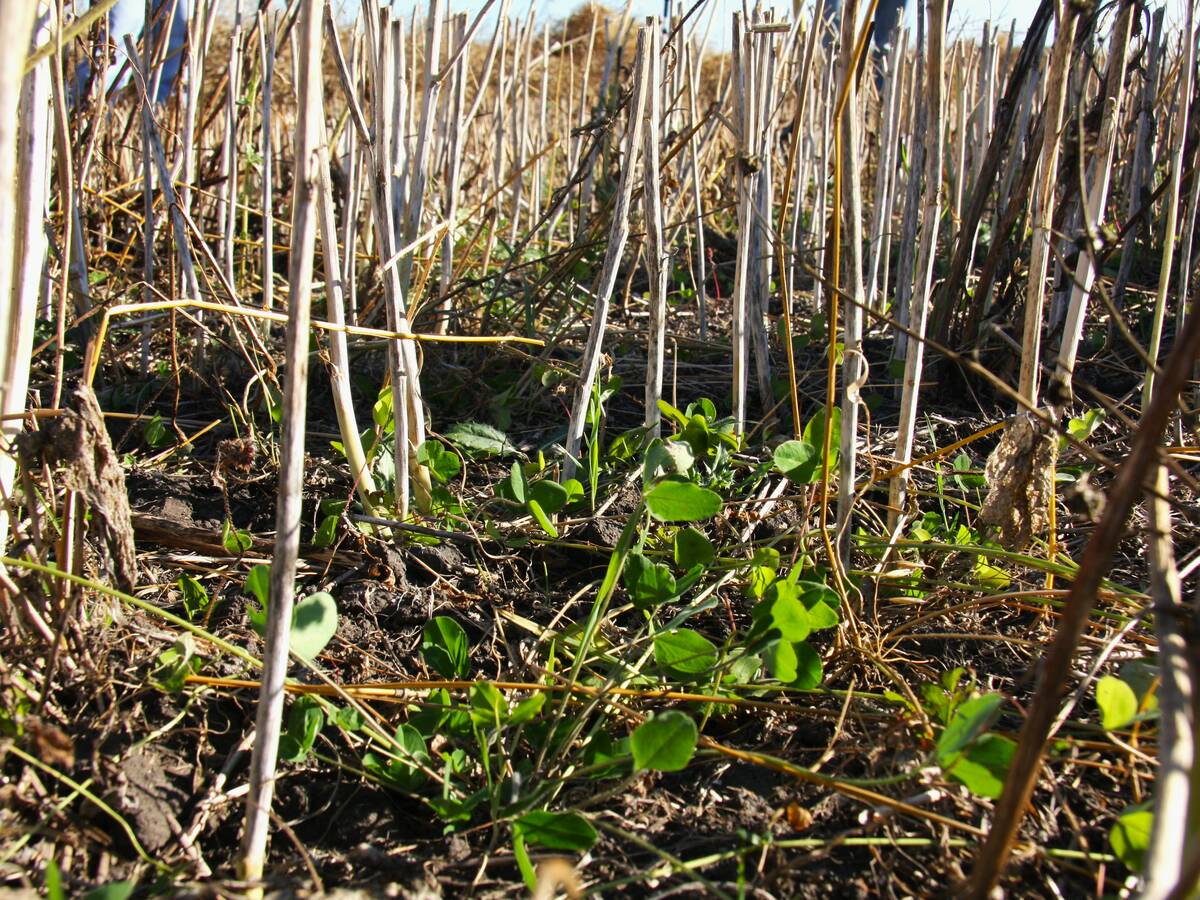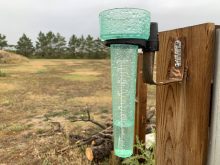Redekop and Global Neighbour are developing a new seed destruction system that can be used on smaller combines
Saskatchewan-based Redekop and U.S.-based Global Neighbour Inc. have teamed up to develop a new weed seed destruction system.
It uses a specific spectrum of light to kill weed seeds exiting the combine, rather than the mechanical destruction method used by Redekop’s current seed control unit.
“They (Global Neighbour) have found there’s a certain light spectrum that, when you apply it at the right amount of light and certain amount of time, it can kill the seed,” said Trevor Thiessen, CEO and owner of Redekop.
Read Also

Saskatchewan project sees intercrop, cover crop benefit
An Indigenous-led Living Lab has been researching regenerative techniques is encouraging producers to consider incorporating intercrops and cover crops with their rotations.
“If you think about sterilization processes, there’s different ways you can use infrared light. In that context, it’s similar. It impacts the seed in a way that makes it nonviable.
“Global Neighbour had developed the concept of using this. They had done lab-scale tests. Their problem was how do we make this work in a combine setting, which is why we got involved with them because that’s our expertise.”
Redekop has been working for the past two years to adapt what Global Neighbour calls its Directed Energy Flora Control technology for use on a combine. This season, there will be two prototype systems on working combines, one in the U.S. and one in Canada.
“We’ve done a couple of prototypes and we’re still working on fine-tuning the exact way that it’s going to mount,” says Thiessen.
“It will mount up in a way that we take the chaff off the stream from the combine. We’ll separate the chaff stream, which is where the vast majority of weed seeds are contained, and we’ll direct those into this Global Neighbour device.
“Once it’s done, we’ll use our chaff spreading expertise to redistribute that material back into the waste stream of the combine.”
The seed control system Redekop already markets can only be installed on Class 8 and larger combines, because it requires a substantial amount of horsepower to run. Class 7 and smaller combines usually aren’t able to handle those extra power requirements.
“We say it’s in that 65 to 80 horsepower range,” says Thiessen of Redekop’s current unit. “With this light technology it can be 10 to 15 horsepower to run material through it, so it’s significantly less. That amount of horsepower is pretty easy to incorporate into most of those smaller Class 6 or 7 combines.”
The new system has a limitation that make it less suitable for larger combines. There is too much material coming through the machine too fast for the current light technology system to keep up.
“In the early days, it won’t be able to handle the volume of seeds from a Class 8 or 9 combine,” says Thiessen of the prototype. “There’s just too much chaff material coming off the back of these huge shoes.”
For that reason, the initial design will be developed for Class 7 and smaller combines.
A hybrid system could be developed later that is suitable for larger combines, but that will be a later development.
“We have a concept of using a hybridized model where you have a reduced horsepower mill and this light technology combining the two,” Thiessen adds. “That’s something we’ve been playing around with.”
Efficacy of the light system varies depending on the size of seed exposed. Larger seeds like volunteer corn or soybean are less vulnerable to the treatment than smaller seeds.
“So on a hybrid, the mill could be scaled back to work on the large seeds and all the small seeds could be done by the light technology,” says Thiessen.
“But in the short run, over the next year or two, we’re going to be working on a standalone product with just the light technology separate from ours.”
After field trials are complete this season, Thiessen expects to have a limited production release next year.
“We’re hoping to scale up that test into a soft launch in 2025 with kind of a full launch in 2026. If it goes well this year, we should see a number of units on the market in 2025.
“We have an estimate of what we think the retail price will be. We’re hoping it will be about 60 per cent of what our current mill systems are for the bigger combines.
“That would put it, in Canadian dollars, somewhere in that $60,000 range. We’re hoping maybe even a little better. But there’s a lot to be sorted out on that.”
















